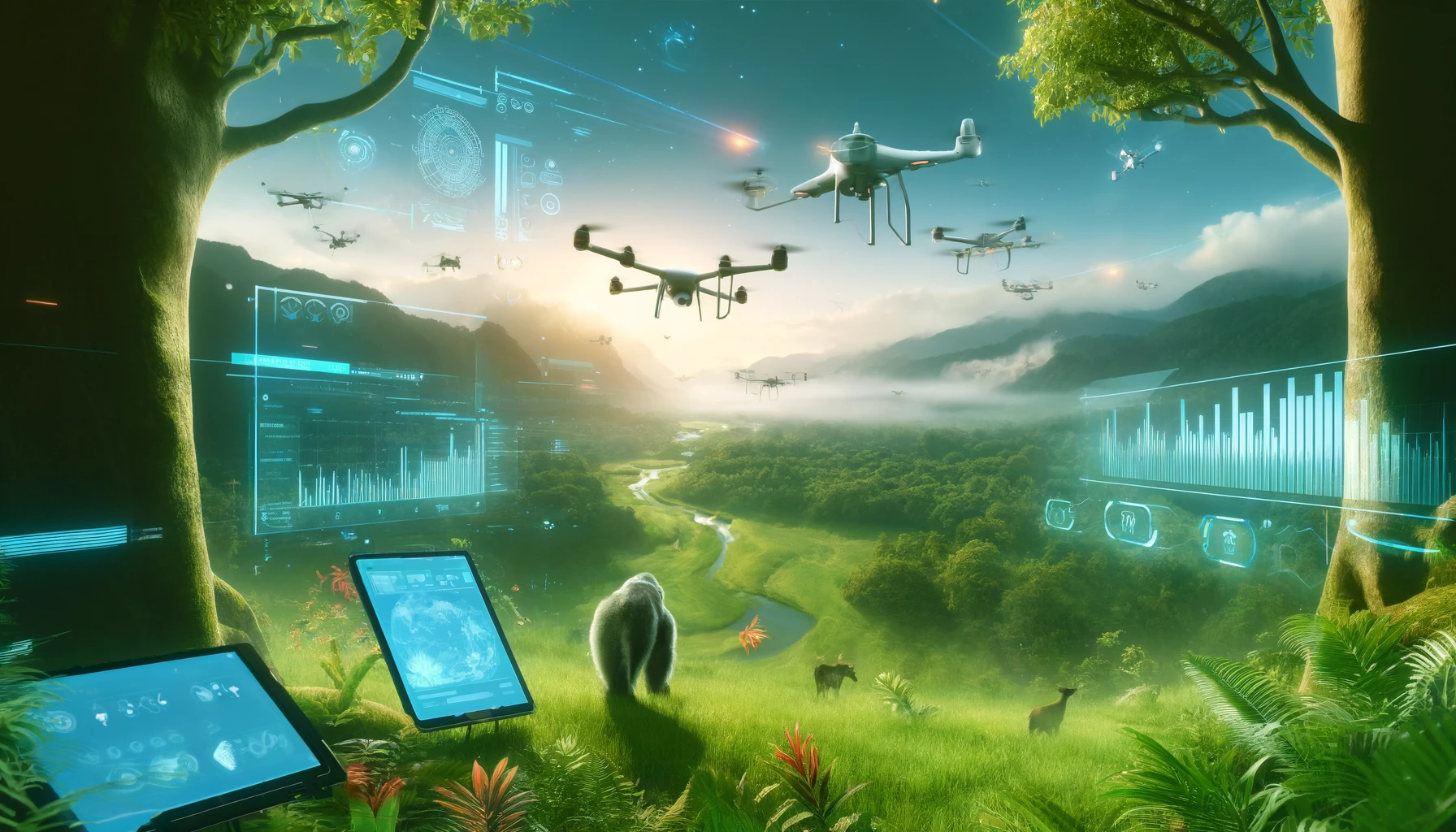In the battle against climate change and the race to conserve our planet’s dwindling natural resources, artificial intelligence (AI) is emerging as a key ally. From predicting weather patterns to monitoring endangered species, AI’s role in environmental conservation is growing both in scope and importance. This article explores how AI is being used to combat climate change and protect our planet’s ecosystems, while also addressing the challenges and limitations of these technologies.

AI in Climate Change Management
AI is revolutionizing our approach to understanding and managing climate change. By processing vast amounts of environmental data, AI models can predict weather patterns and climate changes with high accuracy. These predictions are crucial for preparing for extreme weather events and managing the impacts of climate variability on ecosystems. For example, Google’s DeepMind has developed an AI system that can accurately forecast wind power output 36 hours in advance, helping energy providers better manage their grids and reduce carbon emissions.
Wildlife Conservation and Anti-Poaching Efforts
In the realm of conservation, AI is being deployed to track animal populations, monitor their habitats, and even predict poaching events before they occur. Drones equipped with AI-powered cameras provide real-time data on the movement and health of species across vast areas, making wildlife monitoring less invasive and more efficient. In one notable case study, researchers at Carnegie Mellon University used machine learning algorithms to predict where poachers would strike in Uganda’s Queen Elizabeth National Park. Their system achieved an accuracy rate of over 90%, allowing park rangers to intervene and prevent the killing of endangered animals.
Forest Management and Deforestation Prevention
AI is also playing a crucial role in forest management. By analyzing satellite images, AI can help detect illegal logging activities and assess the health of forests. This technology enables conservationists to act swiftly against deforestation and helps policymakers make informed decisions about forest conservation strategies. For instance, Rainforest Connection uses AI-powered acoustic monitoring systems to identify chainsaws in real-time, allowing park rangers to locate and stop illegal logging operations before they cause irreversible damage.
Pollution Control and Urban Planning
AI applications extend to managing and reducing pollution. By analyzing patterns from environmental monitoring stations, AI can identify pollution sources more quickly and predict pollution levels, aiding in more effective responses and better urban planning to minimize environmental impacts. In China, for example, the government has deployed an AI-powered system that monitors air quality across the country. The system uses machine learning algorithms to analyze data from thousands of sensors, providing real-time information on pollution levels and helping authorities take action to mitigate its effects.
Challenges and Ethical Considerations
While AI offers remarkable tools for environmental protection, it also raises ethical and practical challenges. The energy consumption of AI systems is a concern, as is the need for transparency in how these systems are used and the decisions they influence. Balancing these factors is crucial as we harness AI’s capabilities for environmental good.
Conclusion
AI as a Guardian of the Environment
AI stands as a guardian of the environment, offering powerful tools that enhance our ability to preserve the planet for future generations. As technology advances, so too does our potential to combat environmental challenges more effectively, demonstrating that AI can be a force for good in the ongoing effort to protect our natural world. By addressing the limitations and ethical considerations associated with these technologies, we can ensure that they continue to serve as valuable allies in the fight against climate change and conservation efforts.
Stay tuned to our blog for more updates on how AI is shaping other sectors and contributing to global sustainability efforts.
Takeaways
- AI is revolutionizing our approach to understanding and managing climate change.
- By processing vast amounts of environmental data, AI models can predict weather patterns and climate changes with high accuracy.
- Predictions are crucial for preparing for extreme weather events and managing the impacts of climate variability on ecosystems.
- AI is being deployed to track animal populations, monitor their habitats, and even predict poaching events before they occur.
- Drones equipped with AI-powered cameras provide real-time data on species movement and health across vast areas, making wildlife monitoring less invasive and more efficient.
- Machine learning algorithms can be used to predict where poachers would strike in national parks, helping park rangers intervene and prevent the killing of endangered animals.
- AI is playing a crucial role in forest management by detecting illegal logging activities and assessing the health of forests.
- This technology enables conservationists to act swiftly against deforestation and helps policymakers make informed decisions about forest conservation strategies.
- In China, an AI-powered system monitors air quality across the country using machine learning algorithms to analyze data from thousands of sensors.
- The energy consumption of AI systems is a concern, as well as the need for transparency in how these systems are used and the decisions they influence.
- Balancing limitations and ethical considerations associated with these technologies is crucial to ensure that AI continues to serve as valuable allies in combating climate change and conservation efforts.